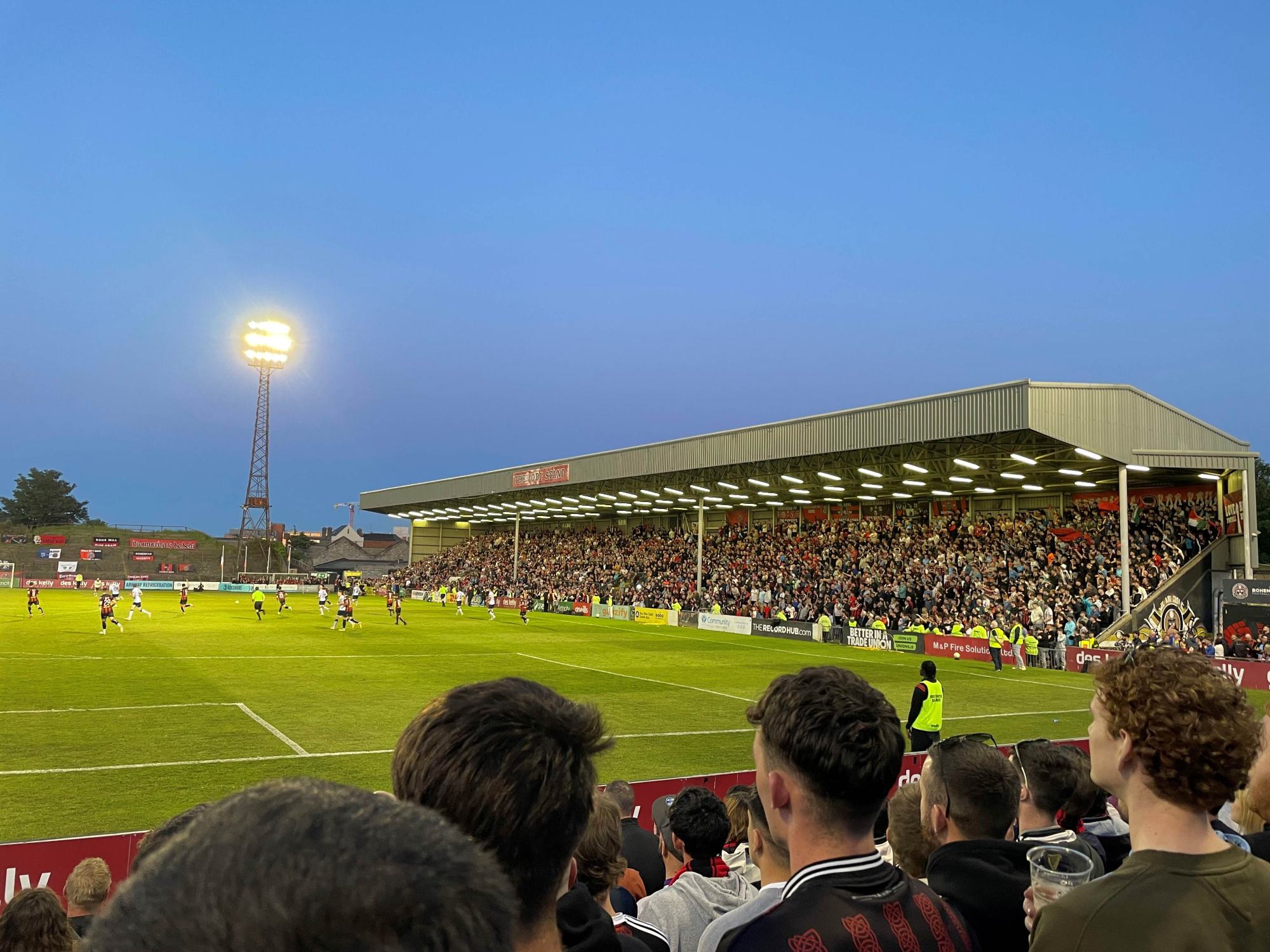My experience at my first-ever League of Ireland game
Association football only ranks third among Ireland’s most-watched spectator sports, something quite uncommon in Europe and even the rest of the world. But, given the competition with the nation’s native pastimes like hurling and Gaelic football, this isn’t much of a surprise.
Nevertheless, Ireland’s national association football competition is only on the rise. The League of Ireland has existed in some form since 1921, and today is divided into two divisions of ten teams each. Since the pandemic in particular, attendances have soared.
Last season, the league averaged 3,777 spectators across all games – a 488 increase from the previous campaign. In fact, average attendances have doubled in the space of ten years.
What’s more, last year’s cup final between Drogheda United and Derry City drew almost 39,000 spectators to Dublin’s Aviva Stadium. Yet, with over 80,000 fans packing out the capital’s Croke Park every year for the All-Ireland Championships in hurling and Gaelic football, association football still has some way to go.
Everyone is made to feel welcome at Bohemians
Unlike most other leagues in Europe, the League of Ireland’s season runs from spring to autumn meaning games take place during the summer months. So, with the Championship season all wrapped up and Norwich City not ruining my every weekend, I decided to head to Dublin to investigate just why the league is going from strength to strength.
In the Premier Division alone, four of its teams are based in the nation’s capital. Fixtures typically take place at 7.45pm on a Friday night, and that weekend Bohemians were hosting cross-city rivals Shelbourne at their Dalymount Park home.
Bohemians’ ground is known as the “home of Irish football”, having been in continuous use by the side since 1901. Yet, with its terraced Tramway End having been ruled unsafe and left to rot, Dalymount is looking noticeably worse for wear today.
The game’s atmosphere more than made up for its quality
For me, though, its shabby appearance only adds to its historic charm, something that is missing from so many football stadia in England.
Everyone is made to feel welcome at Bohemians, even someone like myself who sports the unmistakable accent of an Occupier. In March, the club launched Ireland’s first national study of LGBTQI+ inclusivity in domestic football alongside Trinity College Dublin. On matchdays, volunteers give their time to help raise money for the relief efforts in Gaza.
The quality of the game was nothing to write home about. Owing to years of general ambivalence among Irish sports fans and the nation’s young talents being poached by mega-rich Premier League clubs, the League of Ireland still has some way to go to compete with other European competitions.
Yet, the game’s atmosphere more than made up for its quality.
We were seated in the uncovered Des Kelly Stand, which was just fine on a pleasant spring evening. The main stand and the designated away section themselves do have roofs, which helped to intensify the atmosphere in what was a heated meeting between two Dublin rivals.
If the league gets its infrastructure right, Irish fans may no longer be compelled to look to the Premier League
The support from both sets of fans was electric, another aspect of English football that has slowly been eradicated over the years by increasingly-stringent rules and regulations. Both groups lit pyrotechnics and smoke bombs as their teams took to the pitch, something that would see you hung, drawn, and quartered in England.
Despite such an atmosphere, there were no signs at all that either set of fans were willing to engage in fisticuffs with the other, something which can often mar even lower league games back home.
The biggest disappointment was the beverage selection. I was keen to give the Rockshore Irish Lager they serve at the ground a spin – the official beer of the League of Ireland – but it tasted like Carling in disguise.
Stadium selection aside, Dublin is naturally world-renowned for its drinking spots. The city is already a popular weekend getaway destination, and the charm of the nation’s domestic league makes a game well worth a visit for sports fans.
With its growing fanbases and supporters’ culture, the League of Ireland seems like it is on the up. If the league gets its infrastructure right, Irish fans may no longer be compelled to look to the Premier League for a team to support.

Comments